Northern European Games
The games we bring are two: Hnefatafl and Tablut, with two versions of the first. Both games are very similar both in the movement of the pieces and in the objective of the games.
Hnefatafl was a well-known game among the Vikings and was spread by them. The tablet, on the other hand, was played by the Laponians.
HNEFATAFL game
Making some history, we will say that it is one of the great board games. Most of the boards seemed to be fake and wood, boli, garlic, glass, bone and branches were used to make the pieces. It reached its highest prestige in the medieval beginnings in northern Europe. It was a dark time of great population movement. Like what we know about the history of that period, we know very little about the game of the Vikings, although current archaeological research has begun to clarify something.
Hnefatafl tables found in a tomb of the Iron Age of Denmark, game in the territory of the Scandinavian Vikings d. C. It tells us that it was played in the year 400. It was brought by the Vikings to the dominated villages, becoming the only board game of saxonists in Iceland, Great Britain and villages of Eire.
Over time the game developed and archaeologists have found different versions of the board in the territories ranging from Eira to Ukraine. This game is mentioned in numerous Icelandic saga or poetry, as well as in some warm scribes.
In some scribes this game is mentioned as HNEFATAFL, that is, as a real table. Thanks to the study of these manuscripts and the different types of tables and pieces found, the researchers were able to know the behavior. However, there were certainly different versions of the rules in different places and times.
In a 10th century English scribe, written in Latin at the time of King Athelstan, the board and placement of the pieces were used to present the gospels.
The first version we are going to offer here, took J out of this manuscript. Armitage Robinson (Time of St. Duncan, Oxford, 1923). The difference with the medieval version is that, instead of playing in points, it is played in pictures.
The latest documents concerning this game certify its use in Wales in 1.587 and in Lapland in 1.723. Download game XI. It began in the 18th century with the rise of chess, which was limited to remote marginal areas.
First version
In this version we want to highlight a distinction. The game can be played on both points and pictures. If you play on points, the table will have 18 x 18 tiles (19 points per line). If you play on the tiles, the table will have 19 x 19 tiles. From now on the rules are the same for the points (see figures 1 and 2).
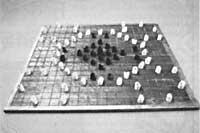
1. A player will have a king and 24 dark pieces. Other 48 clear pieces. The initial position can be seen in the images, with the king in the center point box.
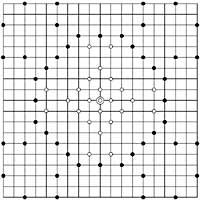
2. Turns are played, starting with the king.
3. All pieces move like a chess tower, as many free tables in vertical or horizontal as desired, not diagonally, or jumping over other pieces.
4th Piece trapping. The enemy piece is captured alternating between two pieces, horizontally or vertically (not diagonally). However, a piece can be inserted without being caught between two pieces of the enemy.
5. To capture the king you have to surround him on all four sides with four pieces of the enemy.
6. The dark will win if they get the king to reach a quadrant on the edges of the board. The lights will win in case of the king's run over.
Second version
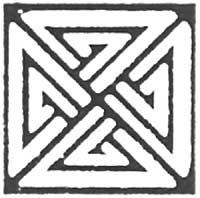
IX. They reflect the use of the X century game. The images in the table correspond to the design of Vikings (Figure 3).
As in the previous version, there are only two types of pieces: the king (greater than the rest of the pieces) and the gudaris. All parts have the same movement.
1. The design of the board (Figure 3) shows the placement of the pieces. In the box located in the center of the board with the following image (real square):
That is, one of the five real squares there. Its defenders, 12 clear pieces, are located around it in pictures such as:
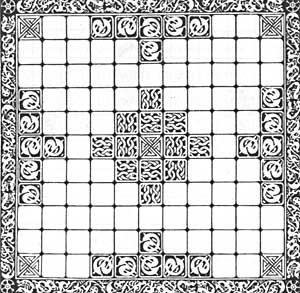
The twenty-four dark pieces are aggressive and placed on the edges of the board in pictures with the image:
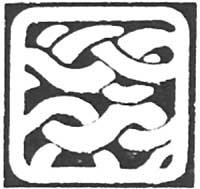
2. All the pieces have the same movement; the Chess tower movement, that is, you can move a piece in a horizontal and vertical square row, but not diagonally. In each turn you can move a piece to the free frames without jumping on another piece.
3. The royal squares can only be occupied by the king. The others could pass over the central picture without staying.

4º To capture a piece, the enemy has to place his two pieces next to him.
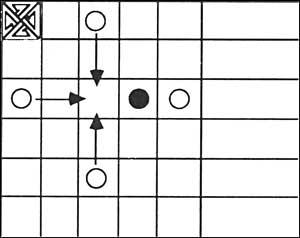
5. You can also capture the pieces on the edges by blocking them on the side frames of the real squares
6. The objective of the game, for the dark ones, is to capture the king and for the king to escape to some real box from the vertices.
7. To capture the king you have to surround him on all four sides. You can also hunt while the three aggressors surround you on three sides, if for the fourth part is the central square.
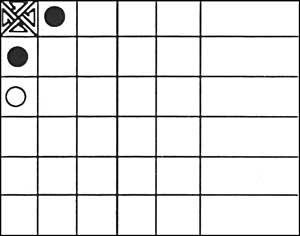
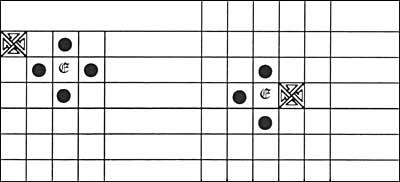
8th. The first movement is carried out by the aggressors.
TABLUT game
The Tablut game looks much like hnefatafl, but fewer pieces and fewer boards are used. Although the initial position of the pieces is different, the movements and objectives are equal.
The tablet comes from Lapland. The first description of this game was made by the Swedish botanist Carolus Linnaeus. On the six-month trip to Lapland in 1732, he made numerous descriptions of the Laponian fauna and flora, as well as its inhabitants and their way of life. One of them was the board made on the skin of the reindeer and the description of this game. However, Linnaeus was young and unknown at that time and no one cared about his work. XIX. Until the 20th century, after many months, this work was not published.
Regulations
A table of 9 x 9 boxes is used (see figure 7). The central picture is the “conaquis” (throne), which can only be used by the king. In the game described by Linnaeus, a player has king and eight gudaris. Against, sixteen gudaris.
1. At the beginning of the match, the pieces are placed as black and white points appear in the image.
2. All the pieces have the same movement, horizontal and vertical, as the chess towers.
3. The capture is done by closing a piece between our two pieces in a vertical or horizontal row. However, if we place a piece between two pieces of the opposite, we cannot catch it.
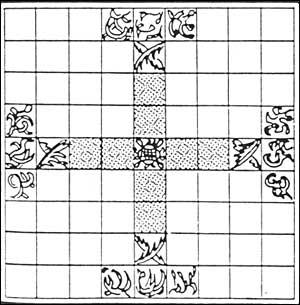
4º To capture the king must be closed by the four faces (or by the three if the fourth is the conaquis). In this case the aggressors are the winners.
5. The king will win if he reaches a square of the edges of the table. If a road is open to the king, the king raitxi! (to chess). If there are two open roads! (a xake mate) I would say. In this situation you will win, as otherwise you cannot close the two ways in a move.
Remember that these games are attack and defense. Each group can act in the form of attack or defense and change tactics. The problems that each group has are different. So, try to play in different parts, to see who wins the most.
(Thanks to Xabi Artola)





